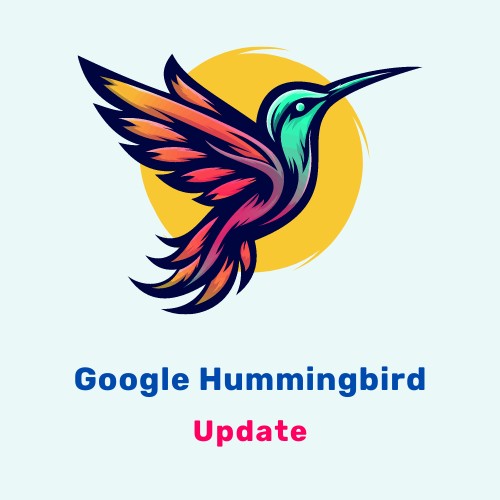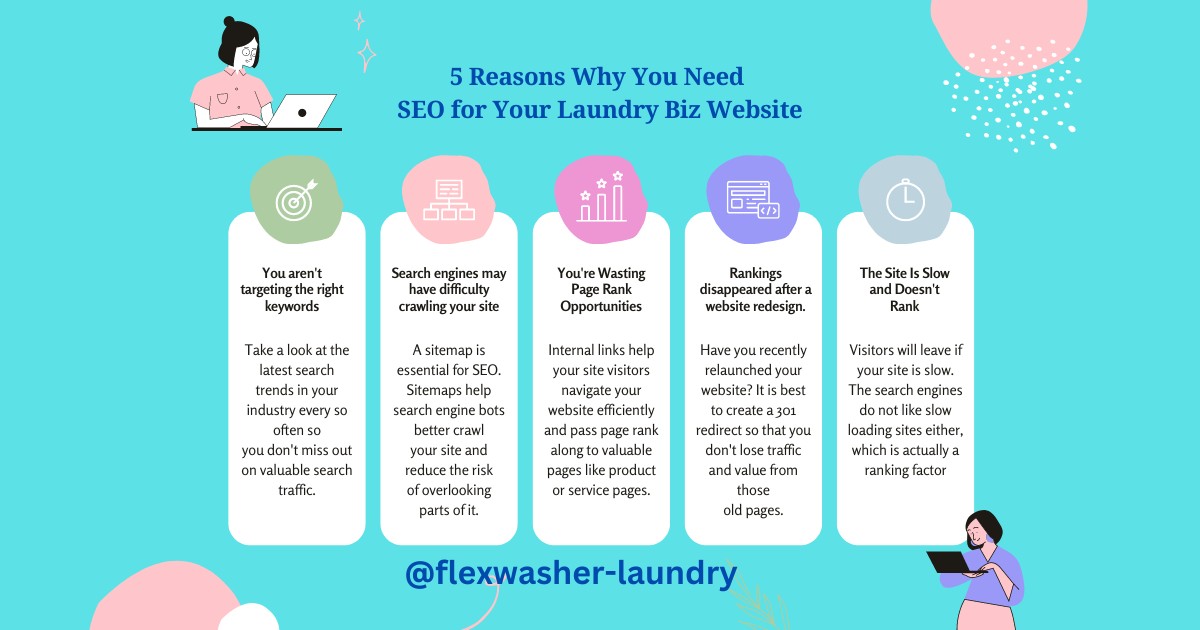In the ever-evolving digital world, Google’s algorithm updates play a crucial role in determining a website’s search engine ranking.
For laundry and cleaning service businesses, understanding the impact of these updates—especially the Google Hummingbird Algorithm—is vital to maintaining or recovering online visibility.
What Is the Google Hummingbird Algorithm?
Launched in 2013, the Google Hummingbird algorithm revolutionized how search engines interpret queries.
Unlike previous updates that focused heavily on individual keywords, Hummingbird introduced semantic search.
This means Google began focusing on understanding the intent behind user searches rather than just matching keywords.
Hummingbird’s purpose is to improve the user experience by delivering results based on context, user intent, and long-tail keywords.
For laundry and cleaning service businesses, this means creating content that answers user queries in a comprehensive, informative manner. Know more about Google Hummingbird Algorithm
Impact of the Hummingbird Algorithm on Websites
When Hummingbird was rolled out, many websites experienced a shift in rankings.
The algorithm focuses on several key elements:
- Content Relevance – Websites offering relevant, in-depth answers to user queries saw improvements in ranking.
- Long-Tail Keywords – Instead of focusing on short, general keywords like “laundry service,” Hummingbird prioritizes long-tail keywords such as “affordable eco-friendly laundry service near me.”
- User Experience – Websites that optimized for user experience (fast loading times, mobile-friendliness) gained higher visibility.
- Structured Data – Hummingbird rewards websites that implement structured data, which helps search engines better understand the context of the content.
For a laundry business, these factors must be considered when developing website content and optimizing for search engines.
Neglecting these elements could result in a ranking drop, which is why understanding and adapting to the Hummingbird algorithm is essential for SEO success.

Key Meta Tags and Their Effect on Ranking
Meta tags continue to play an important role in SEO, especially when aligned with the Hummingbird algorithm.
Here are the key meta tags that influence rankings:
- Title Tag: Ensure your title tags are relevant to user queries, including long-tail keywords. For example, instead of “Laundry Service,” use “Best Laundry Service in [City]” , “Best Dry Cleaners in [area]”
- Meta Description: This doesn’t directly affect rankings but can improve click-through rates (CTR) if optimized. Write meta descriptions that offer clear, actionable insights, such as “Get eco-friendly laundry services with free pickup in [City].”
- Heading Tags (H1, H2, etc.): Headings help break content into digestible parts. Align your headings with search intent by using phrases such as “How to Choose the Right Laundry Service” or “Top Benefits of Using a Professional Cleaner.”
- Alt Tags for Images: Don’t forget to optimize your images with alt text that includes relevant keywords. This helps improve accessibility and also allows search engines to understand image context.
Why Websites Experience Ranking Loss Post-Hummingbird Update
Despite Hummingbird’s benefits, many websites saw a decline in rankings after the algorithm was released.
Several common mistakes contribute to this loss, and understanding these pitfalls is essential for recovery:
- Keyword Stuffing – Websites that continue to overuse specific keywords without context or relevance have been penalized. Laundry businesses often fall into this trap by repeating terms like “best laundry service” excessively.
- Thin Content – If your website content lacks depth or fails to answer common customer questions, it will not perform well. Google Hummingbird values comprehensive content that provides value to users.
- Poor User Experience – Websites that are slow to load, not mobile-friendly, or difficult to navigate lose visibility. Hummingbird promotes websites that prioritize smooth user experiences.
- Ignoring Long-Tail Keywords – Some websites stick to short, high-competition keywords. However, Hummingbird focuses on long-tail keywords that match the intent behind user searches. Laundry websites should target phrases like “how to remove stains from delicate fabrics” instead of broad terms like “laundry tips.”
Complete Recovery Steps from Hummingbird Algorithm Penalties
Recovering from a Google Hummingbird algorithm penalty requires a strategic approach. Below are actionable recovery steps:
Focus on User Intent
Align your content with what users are searching for. Instead of creating content solely around laundry services, try to answer common questions such as:
- “How does eco-friendly laundry work?”
- “What’s the difference between dry cleaning and regular laundry?”
Use tools like Google Search Console to see what queries are driving traffic to your site, and create content that directly addresses those questions.
Optimize for Long-Tail Keywords
Research long-tail keywords that your target audience is likely to use. For example, instead of optimizing for “laundry services,” use terms like “best eco-friendly laundry service in [City]” or “laundry delivery services for businesses.”
Use keyword research tools such as Google Keyword Planner or SEMrush to identify long-tail phrases relevant to your business.
Optimize for Voice Search
With the rise of voice assistants like Google Assistant and Alexa, voice search optimization is becoming crucial. Voice searches tend to be more conversational and often long-tail queries. To optimize for voice search:
- Use natural language in your content, focusing on how people speak rather than type.
- Answer common questions clearly, as voice search often relies on question-based queries like “Where can I find laundry services near me?”
- Ensure your website loads quickly and is mobile-optimized, as most voice searches occur on mobile devices.
By optimizing for voice search, your laundry business can capture traffic from users who rely on hands-free, conversational search methods.
Optimize for Featured Snippets
Featured snippets are short, direct answers that appear at the top of Google’s search results. Securing a snippet can significantly boost your visibility. To optimize for featured snippets:
- Use clear, concise headers such as “How to Remove Stains from Clothes.”
- Format your content into lists, tables, or direct answers to likely queries.
- Address questions or terms related to your services, like “What’s the best method for dry cleaning?”
Targeting featured snippets will help your website stand out and attract more organic traffic from users seeking quick answers.
Optimize for Google PAA (People Also Ask)
The People Also Ask (PAA) section shows related questions people are searching for. To appear in this section:
- Provide answers to commonly searched questions related to laundry services, like “How much does professional laundry service cost?” or “How long does dry cleaning take?”
- Use a FAQ format or include common questions and answers within your blog content.
- Ensure your answers are concise (40-60 words is optimal) and well-structured.
By targeting PAA, you can increase your chances of appearing in more organic search results, leading to improved visibility.
Also your should know Google Panda Algorithm Recovery Strategies
Google BERT Algorithm Updates for SEO Optimization
Google March 2024 CORE Algorithm Updates
Well Keyword-Optimized Blog Content
Publishing well-optimized blog content is critical for recovering and maintaining rankings. Focus on the following:
- Conduct thorough keyword research, prioritizing long-tail keywords related to your niche, such as “affordable laundry service for businesses in [City].”
- Ensure that your blog posts provide in-depth answers and align with user intent.
- Use structured headings (H1, H2) to break up content and improve readability.
- Incorporate internal linking to other relevant pages on your site to enhance user experience and increase the chances of ranking higher.
Creating well-optimized blog content keeps your website active and relevant while aligning with the Hummingbird algorithm’s emphasis on quality and user intent.
Improve Website Speed and Mobile Responsiveness
Website speed is a ranking factor that cannot be ignored. Use tools like Google PageSpeed Insights to evaluate your website’s loading times.
Compress images, leverage browser caching, and minimize code to improve speed.
Similarly, make sure your website is mobile-friendly. A significant portion of users search for laundry services on mobile devices, so having a responsive design is critical.
Utilize Structured Data
Structured data helps search engines understand your content better. Implement schema markup for services, products, and reviews on your website.
This can improve your chances of appearing in rich snippets, which can drive higher organic traffic.
For example, use schema.org to mark up your laundry services, customer reviews, and pricing. This will make it easier for search engines to display key information about your business in the search results.
Also Read more
Digital Marketing Agency for the Laundry Industry

You’re losing more than just rankings right now— every second your website remains penalized by Google Hummingbird update, you’re watching potential clients and profits slip away.
How much longer can you afford to stay invisible in search results while your competitors thrive?
Your website may feel “fine,” but without addressing these penalties, you’re only sinking deeper. Can you afford that?
What happens if you don’t act?
- Lost rankings lead to lost trust. The longer your website remains invisible, the more difficult it becomes to rebuild credibility.
- Missed revenue that your competitors are happily claiming while your business struggles to stay relevant.
- Diminished authority, leaving your business out of the conversation when customers search for laundry services like yours.
Here’s the truth: The longer you wait, the harder it becomes to recover.
The Hummingbird algorithm is unforgiving, and every day you don’t address these penalties is another day lost—another day of missed clients, lost credibility, and declining growth.
Let’s turn it around. Reach out today, and we’ll make sure your website doesn’t stay buried.
We are here to help you recover—before it’s too late.
Reach out at [email protected] or connect with us on via WhatsApp.
Also Recommended to Read:
Google Algorithm Updates for SEO Optimization Process
SEO Ranking Strategies for Dry Cleaners
SEO Optimization Tips for Dry Cleaners
Promote Your Laundry Business Online with Proven Online Marketing Strategies!
Unlock the Secrets of Google Ranking Optimization Strategies , Fast-Track Your Laundry Business Success with Mastermind Mr. Ram
Related Articles
Boost your Website Ranking with Best Google SGE Optimization Services
As Google shifts towards AI-powered search results with its Search Generative Experience (SGE), the way businesses rank online is changing. No longer...
Boost Your Laundry and Dry Clean Service Website’s Visibility with Schema Markup
Running a laundry and dry cleaning service in today’s fast-paced digital world is about more than just offering great service and competitive pricing....
How to Rank Your Laundry Website on Google’s First Page Using White-Hat SEO Techniques to Increase Online Presence
Now a days securing a top spot on Google’s first page can be the difference between getting noticed or getting lost in the competition. For laundry...
Unlock the Power of Performance Max for Your Laundry, Dry Cleaning Business
Performance Max (PMax) campaigns are a game-changer in Google Ads, allowing businesses to run ads across all Google Ads 360 from Search to YouTube...
What Is Structured Data and Why Is It Important for SEO Ranking on SERP?
Standing out online in the competitive laundry service industry can feel challenging, but structured data for SEO offers a powerful solution. Though...
Why Mobile-First Indexing is Important? How to Optimize for It: Improve SEO Efficiency
Shift to mobile-first indexing has dramatically changed how websites are ranked by Google. With more people using mobile devices than desktops to...
